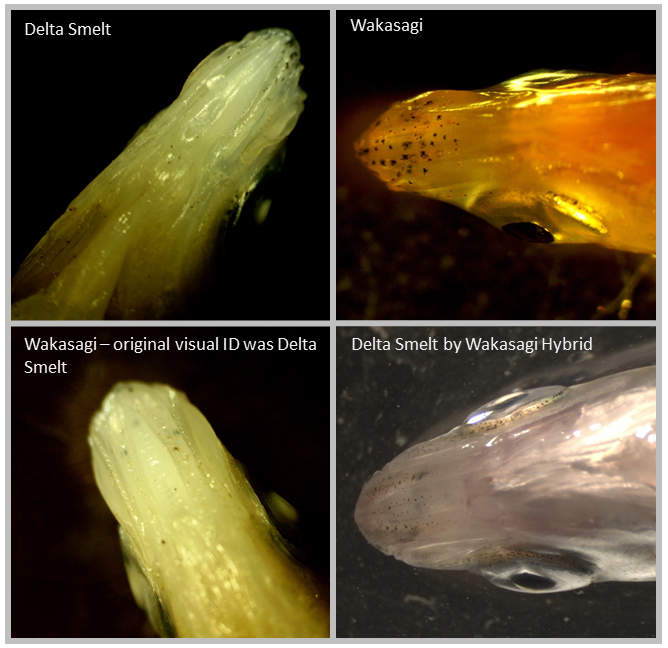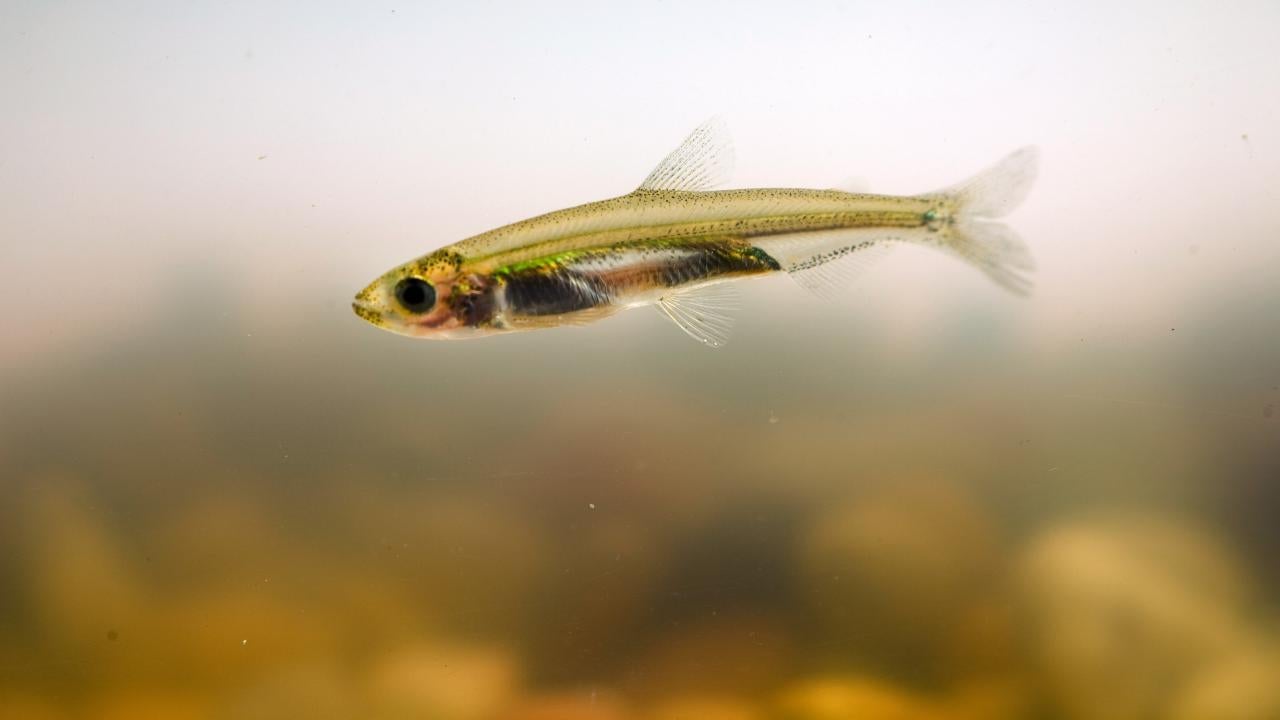Quick Summary
- About a third of delta smelt samples from Yolo Bypass misidentified
- Findings suggest need for genetic analysis to complement visual IDs for the endangered fish
- Juvenile delta smelt look nearly identical to invasive juvenile wakasagi smelt
Genetic tools can be a powerful complement to visual identification of endangered fish, indicates a study from the University of California, Davis.
In the study, published in the journal Conservation Genetics, researchers conducted genetic analysis on fin clips from endangered delta smelt, threatened longfin smelt and invasive wakasagi smelt. The fin clips were among those collected as part of the Yolo Bypass Fish Monitoring program.
One-third misidentified
The scientists were looking for signs of hybridization, which they found is not a significant threat for this population of delta smelt. But the genetic analysis detected something they had not expected: About 27 percent of the fish originally thought to be native delta smelt in the Yolo Bypass were actually nonnative wakasagi. Overall, roughly a third of the samples were misidentified.
The co-authors emphasize that this was a sampling from one section of the delta smelt’s habitat. The results do not suggest that there are fewer delta smelt overall than previously thought. Co-author Brian Mahardja from the California Department of Water Resources said the agency’s monitoring program caught almost no delta smelt during the first 10 years of sampling in the Bypass but caught more than ever within the past five years.
“The results of this study do not alter the long-term abundance trends of delta smelt in the Yolo Bypass, but it does mean we need to genetically identify our fish for higher accuracy,” Mahardja said.
A complement to surveys
Delta and longfin smelt are native to the San Francisco Estuary but have experienced drastic population declines in recent years. The latest California fish survey in the Sacramento-San Joaquin Delta found only two delta smelt during four months of trawling from September to December.
Efforts to protect delta smelt have made it the target of debate between environmentalists seeking to protect the ecosystem and interest groups seeking increased water deliveries for farming and urban uses. Surveys of native fish abundance inform management decisions and lead to policy changes that affect millions of Californians.
“Genetic identification can be a great complement to traditional surveys, particularly where visual identifications are challenging,” said lead author Alyssa Benjamin, a lab technician with the UC Davis Department of Animal Sciences.
Younger smelt harder to identify

The study demonstrates the difficulty of identifying these fish solely by appearance. Delta, longfin and wakasagi smelt have similar features and a capacity to hybridize with each other. While it is possible to distinguish the three species by sight, hybrids are nearly impossible to distinguish by looks alone.
Wakasagi smelt present additional challenges. As juveniles, wakasagi can look identical to delta smelt. A key distinguishing feature is that wakasagi develop several spots under their jaw, while delta smelt do not. But these spots do not tend to emerge until the wakasagi are older, making identification among juveniles more challenging. In fact, 95 percent of misidentified fish were juveniles.
Not all areas analyzed
Delta smelt live only in the San Francisco Bay and the Sacramento-San Joaquin Delta, which includes the Yolo Bypass, a 59,000-acre floodway protecting Sacramento and the southern Sacramento Valley from seasonal flooding.
The researchers note that the study did not analyze all areas where delta smelt are surveyed. Misidentifications are most likely to occur in areas where both delta smelt and wakasagi are present. This includes the Yolo Bypass but is not expected to include the entire estuary.
The Yolo Bypass Fish Monitoring Program also uses a unique, rotary screw trap, which is checked once a day for sampling. Some of the fish are in various stages of decay by the time biologists check the trap, which can make identification more difficult.
“Many of the factors affecting the identification are specific to this area of the Yolo Bypass,” Benjamin said. “I think other areas of the Delta will find better accuracy, so we’d have to explore those areas before making any assumptions about the rest of the estuary.”
Additional co-authors on the study include Ismail K. Sağlam from UC Davis and Hacattepe University in Turkey, and James Hobbs, Tien-Chieh Hung and Amanda Finger of UC Davis.
The study was funded by the California Department of Water Resources.
Media Resources
Kat Kerlin, UC Davis News and Media Relations, 530-750-9195, kekerlin@ucdavis.edu
